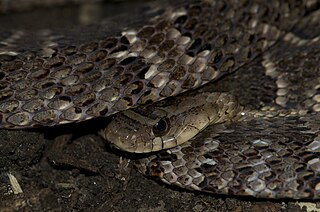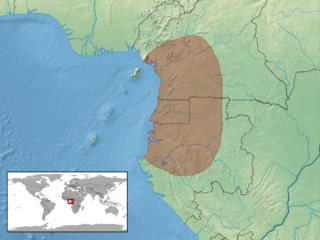
Prince Alexander Philipp Maximilian zu Wied-Neuwied was a German explorer, ethnologist and naturalist. He led a pioneering expedition to southeast Brazil between 1815 and 1817, from which the album Reise nach Brasilien, which first revealed to Europe real images of Brazilian Indians, was the ultimate result. It was translated into several languages and recognized as one of the greatest contributions to the knowledge of Brazil at the beginning of the nineteenth century. In 1832 he embarked on another expedition, this time to the United States, together with the Swiss painter Karl Bodmer.

Blasius Merrem was a German naturalist, zoologist, ornithologist, mathematician, and herpetologist. In 1804, he became the professor of political economy and botany at the University of Marburg.

Pseudoboa neuwiedii, commonly known as the dark-headed red false boa or Neuwied's false boa, is a species of snake in the family Colubridae. The species is endemic to northern South America.
Lystrophis is the genus of tricolored South American hognose snakes. They mimic milk snakes or coral snakes with their red, black, and white ringed patterns.

Xenodontinae is a subfamily of snakes in the family Colubridae.

Xenodon rabdocephalus, commonly known as the false fer-de-lance, is a species of mildly venomous rear-fanged snake in the family Colubridae. The species is native to Central America and northern South America. There are two recognized subspecies.

Xenodon is a genus of New World snakes in the subfamily Dipsadinae of the family Colubridae.

Xenodon severus, the Amazon false fer-de-lance, is a species of snake in the family Dipsadidae. It is found in South America.

Xenodon merremii, also known commonly as Wagler's snake, is a species of snake in the subfamily Dipsadinae of the family Colubridae. The species is endemic to South America and is widespread in the eastern half of the continent.

Xenodon pulcher is a species of fossorial snake in the family Colubridae. It is found in southern South America.

Pseudoboa, the false boas, is a genus of snakes in the family Colubridae. The genus is endemic to South America.
Hensel's snake is a species of snake in the subfamily Dipsadinae of the family Colubridae. The species is endemic to southern Brazil, and it is monotypic in the genus Ditaxodon.

The Gaboon worm lizard is a species of amphisbaenian in the family Amphisbaenidae. The species is native to the west coast of Central Africa.

Xenodon dorbignyi, the South American hognose snake, is a species of snake in the family Colubridae. The species is native to southern South America. There are four recognized subspecies.
Xenodon guentheri, also known commonly as Günther's false fer-de-lance, is a species of snake in the subfamily Dipsadinae of the family Colubridae. The species is endemic to Brazil.
Xenodon histricus, Jan's hognose snake, is a species of snake in the family, Colubridae. It is found in Paraguay, Brazil, Argentina, and Uruguay.

Xenodon matogrossensis is a species of snake in the family Colubridae. It is endemic to Brazil.
Xenodon nattereri is a species of snake in the family Colubridae. It is found in Brazil, Argentina, and Uruguay.

Xenodon semicinctus, the ringed hognose snake, is a species of snake in the family, Colubridae. It is found in Argentina and Bolivia.

Xenodon werneri is a species of snake in the family Colubridae. It is found in Brazil and French Guiana.













